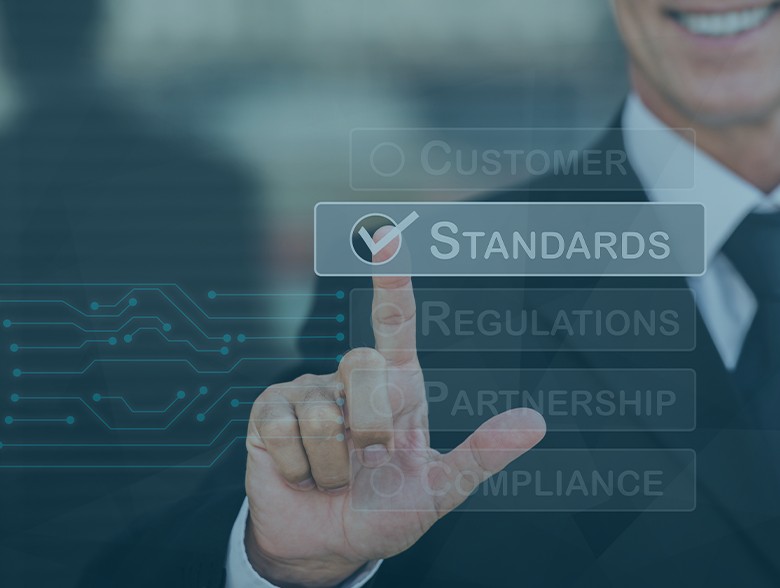- This video doorbell camera has just as many features are my Ring - and no subscription required
- LG is giving away free 27-inch gaming monitors, but this is the last day to grab one
- I tested this Eufy security camera and can't go back to grainy night vision
- I replaced my iPhone with a premium dumbphone - here's my verdict after a month
- Build your toolkit with the 10 DIY gadgets every dad should have
Top 6 Security Challenges of SMEs

By Michal Gil, Head of Product, CybeReady
Small to Medium Enterprises (SMEs) are vital for innovation and economic growth, and their role in larger supply chains makes them an attractive gateway for hackers. After all, you’re never too small to be a target for cyberattacks.
Over 50% of cyberattacks target SMEs. These attacks lead to consequences like data loss, reputational damage, fines, or a complete system shutdown—and within six months of experiencing a data breach or hacking incident, 60% of these businesses cease operations. For hackers, it’s not about headline-grabbing attacks that’ll earn them millions in illicit fortunes. It’s about taking the path of least resistance to an organization’s finances, data, and systems, and unfortunately, SMEs offer easier entry points.
Almost every business experienced turbulent digital transformation thanks to the hurried transition to remote working and cloud infrastructure when the pandemic hit. Although a few years have passed, the lack of dedicated security teams and budget, plus less sophisticated tech stacks, continue to put SMEs on the firing line.
Let’s review the security challenges that are making IT teams nervous this year and discuss the essential remediation strategies you need to know.
Top 6 Security Challenges of SMEs
Balancing the speed of growth with the quality of security is extremely difficult, but SMEs must find a way to prioritize both. Otherwise, you could open your doors to the following risks and challenges.
- Outdated Technology
Reliance on basic security strategies like firewalls and antivirus software is rife among SMEs. Who can blame them? New cybersecurity technology is either too complex, expensive, or requires deep knowledge to maintain. Providers’ pricing and packaging options are often not appealing to SMEs and their specific and complex requirements, which makes purchasing and maintaining a security tech stack overwhelming.
- Overworked Teams
SMEs’ IT teams often turn the cogs with limited budgets and resources, meaning every business decision requires careful prioritization. But this leanness leaves IT teams siloed from the rest of the business and juggling multiple plates. For this reason, 90% of IT staff say they are paying less attention to security alerts than last year.
- Supply Chain Risks
SMEs are the stepping stone to larger organizations and third-party vendors that are more valuable to hackers. Compliance regulations force SMEs to establish policies and processes between themselves and third parties, but most businesses don’t realize that these regulations often define minimum acceptable requirements. That means you must do more, such as investing in employee training and continuous monitoring solutions.
- Rapidly Evolving Cyber Threats
Cloud services are essential for improving efficiency and cost savings, especially in the era of remote working and agility. Without an advanced understanding of cloud security requirements and the context of the evolving threat landscape, SMEs risk falling victim to attacks like malware, ransomware, and phishing. 42% of SME leaders have difficulty visualizing the full scope of an attack, highlighting that they are unprepared for disruptive crisis events.
- Lack of Cybersecurity Training for Employees
40% of SMEs say that a lack of skilled security personnel is a barrier to maintaining a security posture. Knowledge and experience gaps mean employees won’t feel confident and competent in identifying dangerous threats like social engineering attacks and phishing. Cybersecurity training helps foster a culture of security, making it an everyday, long-term consideration rather than a cause for panic.
- Internal Threats and Human Error
While IT professionals are focused on external threats like hackers, the danger might be lurking closer to home. Common mistakes like easy-to-guess passwords, a lack of multi-factor authentication, and little understanding of access control for ex-employees can put your organization at risk. Only half of SME leaders are confident that ex-employees can no longer access systems—let’s hope there’s no bad blood!

Proactive Remediation is the Way Forward
Adopting new technology is one piece of the puzzle, but it’s not the only prevention and remediation strategy SMEs should implement. Here are some effective short- and long-term solutions to help your business build a solid cyber-safe foundation:
Establish an Incident Response Plan
What should you do in the event of a cyberattack? Hopefully, this crisis never happens, but preparing for the unknown is essential. An incident response plan (IRP) defines the exact procedures and recovery strategies your SME will follow in the event of an attack, ensuring you respond swiftly and minimize financial, legal, and reputational damage.
Conduct Periodic Risk Assessments and Vulnerability Testing
Like an incident response plan, you should regularly review risk assessments and vulnerability testing strategies. This task involves assessing your organization’s technology, people, and processes, defining your security posture, identifying areas of concern, and implementing automated monitoring and testing tools to keep you safe 24/7.
Invest in Up-to-date Security Software
We’ve already discussed that SMEs need simple yet effective solutions to make up their cybersecurity tech stack. For example, out-of-the-box solutions are often much easier to deploy and require less technical expertise, which makes life easier for lean IT teams. Other essential software solutions include cloud-based applications (so your data is constantly backed up to prevent data loss), threat detection, and auto-remediation.
Implement Cybersecurity Awareness Employee Training
Finally, regular cybersecurity awareness training like phishing simulations equips employees with the skills needed for secure and confident online working experiences, helping reduce human error, improve security awareness, and protect your organization. You can also consult external experts that tailor award-winning security training to the exclusive needs of SMEs with 25 – 150 employees.
Software security training solutions are used by leading banks, hospitals, and tech companies worldwide. They offer continuous and automated training and advanced analytics features to keep on top of your employees’ progress and knowledge gaps.
Regular employee cybersecurity awareness training is a reliable and high ROI strategy to help SMEs like yours strengthen security measures, and it’s one that doesn’t pull your resources and teams away from other critical tasks.
About the Author
 Michal Gil is an accomplished product leader with a passion for developing innovative solutions that meet the needs of modern users. Currently serving as the Head of Product at CybeReady, Michal leverages her extensive experience in product development to drive the company’s vision forward. Michal is driven by a deep commitment to delivering exceptional user experiences and loves the challenge of taking complex problems and turning them into elegant, simple solutions. These include Employee Readiness Solutions for SMEs. She is a firm believer in the power of teamwork and collaboration, and strives to create an environment that is inclusive, supportive, and empowering for everyone.
Michal Gil is an accomplished product leader with a passion for developing innovative solutions that meet the needs of modern users. Currently serving as the Head of Product at CybeReady, Michal leverages her extensive experience in product development to drive the company’s vision forward. Michal is driven by a deep commitment to delivering exceptional user experiences and loves the challenge of taking complex problems and turning them into elegant, simple solutions. These include Employee Readiness Solutions for SMEs. She is a firm believer in the power of teamwork and collaboration, and strives to create an environment that is inclusive, supportive, and empowering for everyone.

